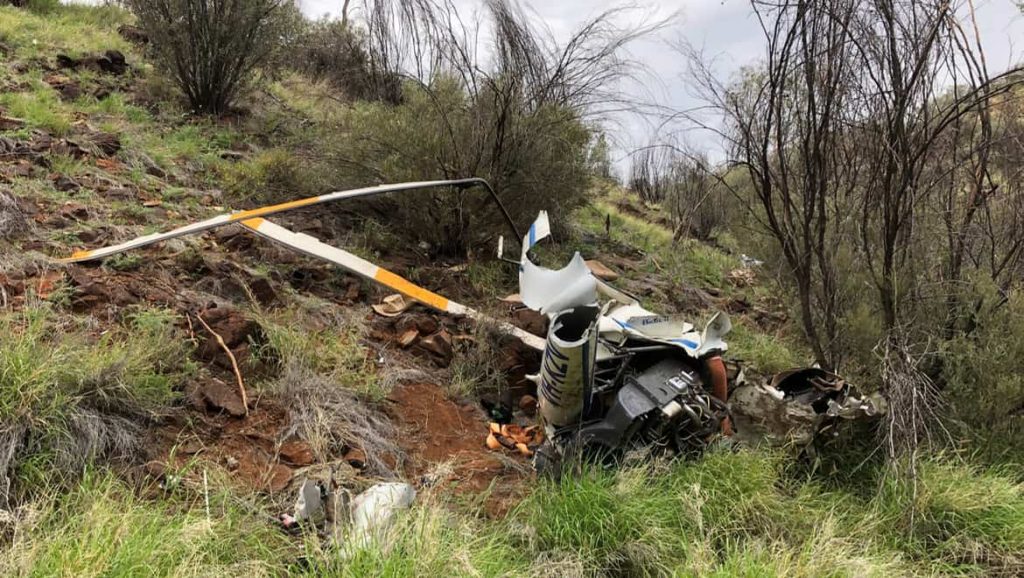
The pilot of a Robinson R22 died because he was flying “unnecessarily” low before encountering strong winds that caused him to crash into mountain ranges east of Alice Springs.
An ATSB investigation into the incident in November 2018 also found there was an elevated blood alcohol level in Campbell Douglas Taylor’s body, but that his actions that day were unlikely to be influenced by it.
The R22’s only passenger, Dan O’Neil, survived but suffered serious injuries, while the helicopter was destroyed.
ATSB director transport safety Dr Stuart Godley said, “When flying at low altitude there is a lower margin for error for obstacle avoidance. Even if a pilot has been trained and approved to conduct low-level operations it should be avoided when there is no operational need to do so.”
On the morning of 24 November 2018, Taylor and O’Neil departed a cattle station homestead’s helipad to inspect bore sites and then assist with the recovery of a vehicle at Quartz Hill.
After completing the inspection, the helicopter took off and was levelled off at 150 feet above ground level, which was below the peaks of the surrounding terrain as it tracked into the MacDonnell Ranges to continue towards Quartz Hill.
Shortly after entering the MacDonnell Ranges, the R22 encountered a downdraft but was flying so low that it had insufficient height to recover, causing it to crash into the ground on a downslope, about 125 kilometres east of Alice Springs.
The helicopter’s last recorded data point indicated it was at about 142 feet above ground level with an estimated ground speed of about 79 knots.
Taylor sustained fatal injuries, while O’Neil was seriously injured.
The investigation also found a number of other factors that increased risk, including incomplete pre-flight planning, overloading, a forward centre-of-gravity, and the pilot’s elevated blood alcohol level.
“Examination of the pilot’s iPad and iPhone found it was unlikely that flight planning data, such as meteorological information, had been accessed in the lead-up to the flight,” Dr Godley said.
“Thorough pre-flight planning is essential for avoiding hazardous weather conditions. It is not only important to obtain the relevant weather information to develop a mental picture of the conditions that may be encountered, but also to assess and understand how it relates to the planned flight.”
The investigation report also notes that it was very likely that the helicopter was overweight on departure and its centre-of-gravity was beyond the forward limit for the entire flight.
“Weight and balance have the potential to influence aircraft handling characteristics, and so it is critical that the loading remains within the prescribed operating limits for the entire flight,” Dr Godley said.
“Otherwise, as the safety margin steadily erodes, even an experienced pilot may not be able to recover from a rapidly developing unsafe condition.”
The report also notes that alcohol was present in the pilot’s blood at a level capable of impairing performance. However, evidence of previous low flying suggested the pilot’s actions may have been normal behaviour and not influenced by alcohol. Therefore, the investigation could not conclude that the pilot’s elevated level of alcohol contributed to the accident, but considered that it increased the likelihood of risk-taking behaviour and mishandling the helicopter in an emergency.
“This accident is an important reminder that blood alcohol can persist the day after significant alcohol consumption, and the residual effects of alcohol may impair performance, especially in demanding situations,” Dr Godley said.















